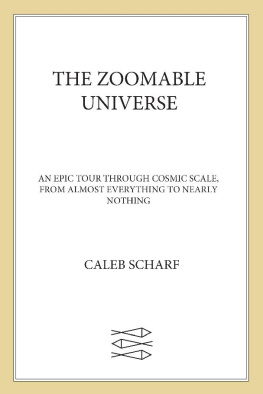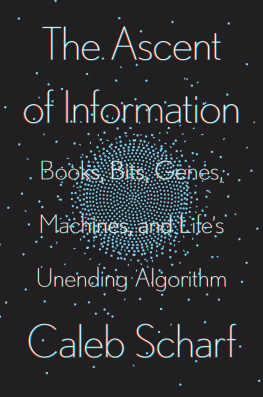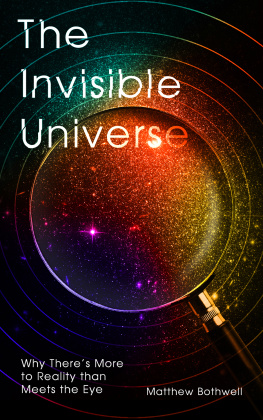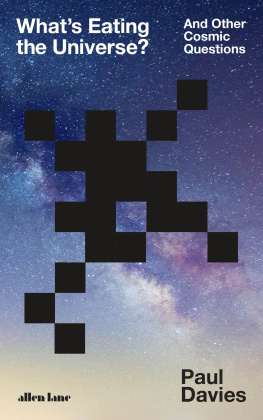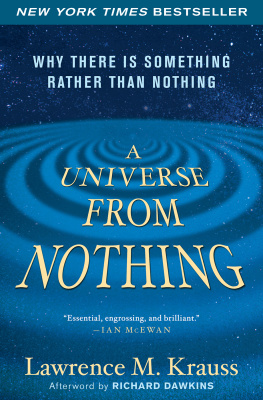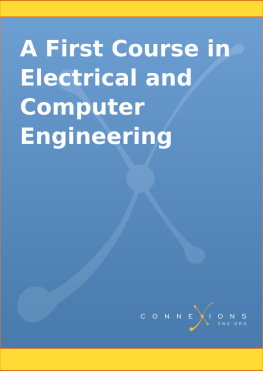The original idea for this book grew from early conversations with Deirdre Mullane of Mullane Literary and Amanda Moon at Farrar, Straus and Giroux. Without their enthusiasm, and a great deal of their patience, this project wouldnt have got past the first centimeter in scale.
Those initial rounds of lunch-fueled cogitation led us to focus on the relationship of the natural world with itselfin scale, time, and energy. As we added ideas like complexity, emergence, and chaos, the vision of the book crystallized. To get from almost everything to nearly nothing has been a fun trip in its own right. Ive had the very great privilege of working with Ron Miller and his supreme illustration skills and imagination, as well as the graphic prowess of Samuel and Juan Velasco of 5W Infographics. All of you have shown me what its like to work with real professionals, time and time again. And in that same vein Id like to thank all the other members of the FSG team, especially Jonathan Lippincott and Scott Borchert. A special shout-out also goes to Annie Gottlieb, whose copyediting skills have made innumerable improvements to the text.
Some of this book took shape during long flights between New York and Tokyo, and in many tranquil moments in Japan. Id like to express my gratitude to all the scientists and staff at the Earth-Life Science Institute at the Tokyo Institute of Technology for throwing fuel onto the fires of inspiration at many points. A special thank-you goes to Piet Hut for planting the seeds for all of that to happen, and for what I expect to be future crops.
To many other friends and colleagues, including Mary Voytek, Frits Paerels, David Helfand, Amber Miller, Michael Way, Nelson Rivera, Daniel Savin, Arlin Crotts, Ayako Fukui, Windell Williams, Abigail and Lewis Wendell, Eric Gotthelf, and Fernando Camilo, thank you for all your support and encouragement.
Finally, as always, my home team: Bonnie, Laila, Amelia, and Marina, thanks for putting up with all of this.
Caleb Scharf
New York, 2016
Ive always been fascinated by the very, very large and the very, very small. The first probably came from the interest in astronomy and space travel Ive had pretty much all my life. The latter might come from having seen The Incredible Shrinking Man when it was first released in theaters (I refuse to look up the year that happened)but I may have wanted to see the movie because I had already read a short story by Henry Hasse called He Who Shrank, which turned the whole idea of macro- and microverses upside down. I also remember a book I devoured in grade school called The Thirteen Steps to the Atom that took me on a step-by-step photographic journey from my familiar world to the almost infinitely small. I discovered the classic Cosmic View around the same timeand still have my original copy. I remember when Charles and Ray Eamess Powers of Ten came out, in 1977; I must have watched it a dozen times then and I dont know how many times since. So when I was offered the chance to illustrate this book, I jumped at it, if for no other reason than that it presented an immense challenge. I had never done anything like it before. No problem with the zoom from the edge of the universe to EarthI was on familiar territory therebut as the book dove ever deeper into the very small, I was exploring new subjects, ideas, and techniques. An especial challenge was having to illustrate things that literally could not be seen, or even measured, for that matter things that in many cases barely had any reality at all.
It also gave me a chance to work again with Amanda Moon, and to work for the first time with Caleb Scharf, whose writing I absolutely couldnt admire more. All to say nothing of the pleasure of associating with the rest of the books wonderful team: Scott Borchert and Jonathan Lippincott. And, as always, a grateful tip of the hat to the ever-patient Judith Miller.
Ron Miller
South Boston, Virginia, 2016
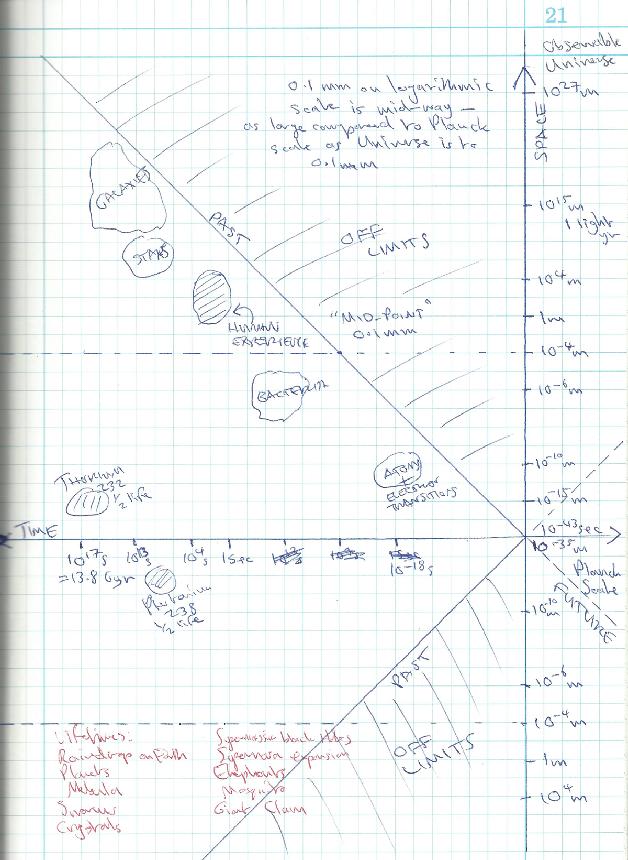
ALSO BY CALEB SCHARF
The Copernicus Complex: Our Cosmic Significance in a Universe of Planets and Probabilities
Gravitys Engines: How Bubble-Blowing Black Holes Rule Galaxies, Stars, and Life in the Cosmos
Extrasolar Planets and Astrobiology
What is known to exist at any scale? A very incomplete list.
0.001 fm or less (a femtometer is 1015 meters): Approximate mirror displacement sensitivity of the Advanced LIGO gravitational wave detector at a frequency of 40 hertz
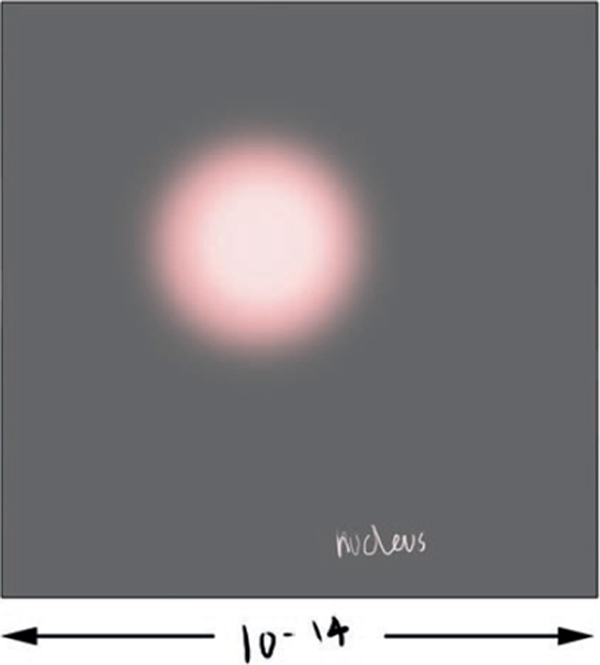
0.84 fm: Effective diameter of a proton
0.1 nm (a nanometer is 109 meters): Effective diameter of a hydrogen atom
0.14 nm: Effective diameter of a carbon atom
0.8 nm: Average amino acid size
2 nm: Diameter of a DNA alpha helix
4 nm: Globular protein
6 nm: Diameter of actin filamentspart of cellular cytoskeletons

7 nm: Approximate thickness of cell membranes
20 nm: Size of the ribosome
25 nm: Typical outer diameter of a microtubuletubular structure forming part of a cells cytoskeleton or structural support
30 nm: Smallest known virusesporcine circovirus, single DNA loop of only 1,768 base pairs
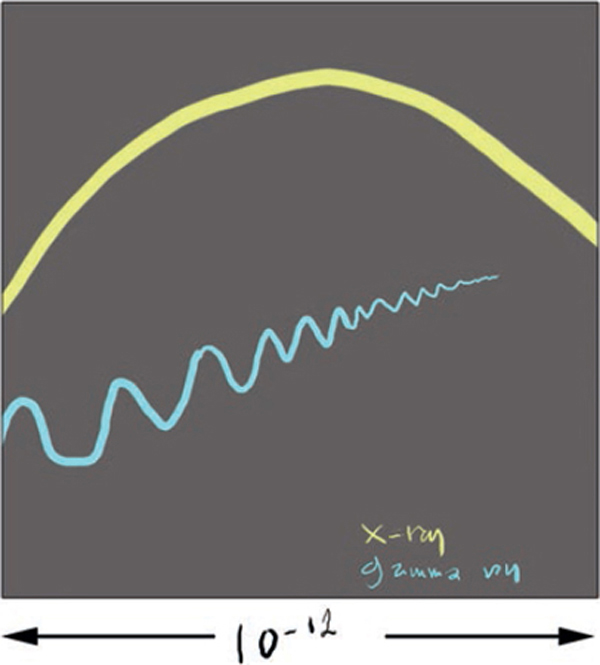
30 nm: Rhinoviruses (common cold)
50 nm: Nuclear pore
100 nm: a retrovirus like HIV
120 nm: Large virus (orthomyxoviruses, includes the influenza virus)
150250 nm: Very large virus (rhabdoviruses, paramyxoviruses)
150250 nm: Smallest known bacteria, such as Mycoplasma
200 nm: Centriolecylindrical organelle in animal cells
200 nm (200 to 500 nm): Lysosomesorganelles in eukaryotic cells involved in producing enzymes that break down proteins, carbohydrates, and more

200 nm (200 to 500 nm): Peroxisomesorganelles in eukaryotic cells that help break down long-chain fatty acids
750 nm: Approximate size of a giant mimivirus
110 m (a micrometer is 106 meters): The general size range for prokaryotes (bacteria and archaea)
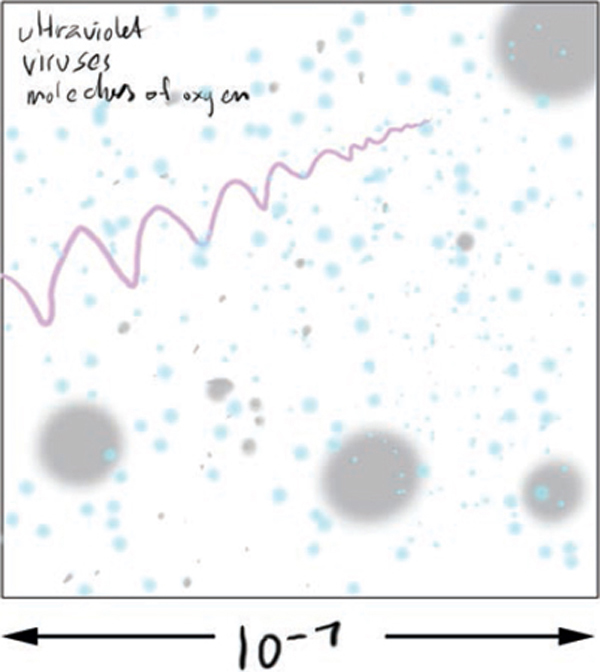
1.4 m: Maximum length of filamentous Ebola virus (about 80 nm wide)
2 m: Escherichia colia bacterium
3 m: Size of a large mitochondrion inside a eukaryotic cell

